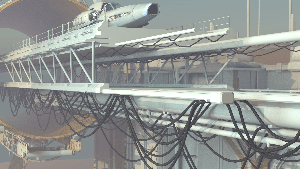This page describes the VRayRenderableCurve node and its use.
Overview
VRayRenderableCurve is a V-Ray node that can make multiple Maya curves directly renderable, without intermediate conversion to paint effects or polygons. Internally, the curves are converted to hair.
Parameters
Render – Enables/disables the rendering of the curves in this set.
Material – Specifies the material applied to the curves.
Tessellation – The curves are internally tessellated into line segments. Smaller values for the tessellation factor approximate the curvature better, but cause slower rendering. See the Tessellation example below for more information.
Start Width/End Width – The curves in Maya do not have thickness, and these attributes must be used to specify the start/end width of the curve. The start of the curve is shown with U symbol in the Maya viewport.
Lock End Width – When enabled, Start Width controls constant thickness along the curve.
Example: Rendered Curves
In the scene below, a VRayRenderableCurves node is used to create the effect of draped cables.
Curves in Viewport 2.0
Resulting Render
Example: Tessellation
The Tessellation parameter affects the number of line segments that are used when approximating the curves. Smaller values use more line segments to approximate the curve, producing smoother results but slower rendering.
Tessellation: 1 (default)
Tessellation: 25
Tessellation: 50










